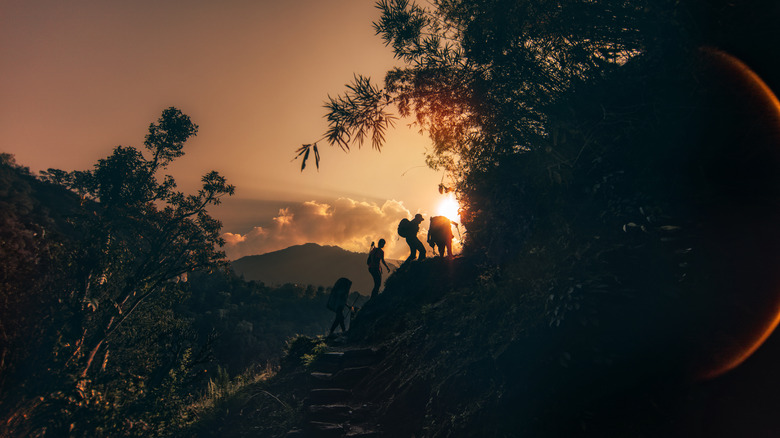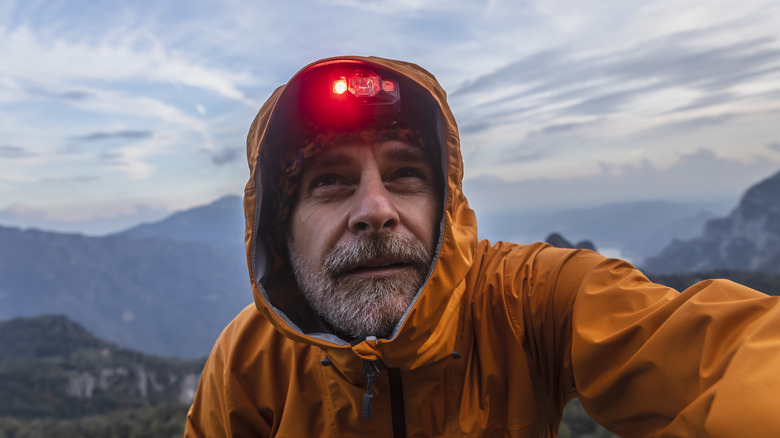The Simple Trick To Tell How Much Daylight You Have Left While Hiking
It happens to everyone, you head out onto a new trail in the afternoon and are having a lovely time, then you look around you and realize the sun is setting and the light is starting to fade. While hiking in the daylight is fun, trying to navigate the forest in the dark is often best avoided. So, how can you figure out how much daylight you have left so you know whether or not you should pick up your pace or end your hike early? One simple way to get an estimate of the remaining daylight is to use your hand.
To do this, simply outstretch one arm with the top of your palm facing you and hold your four fingers (not your thumb) horizontally between the sun and the horizon. According to most estimates, each finger that can fit in the space between the bottom of the sun and the horizon is equal to about 15 minutes. So, if you can fit three fingers, you can estimate that you have about 45 minutes until the sun sets. Of course, this method will give you a rough estimate and the real number will vary depending on where you are in the world and the size of your fingers. However, when you need to make a quick decision in the wild, having a rough estimate can go a long way.
A few caveats
This method isn't perfect and one of the reasons for this is that the sun doesn't always set straight down. In fact, the sun only sets perpendicularly to the horizon if you live near the equator between the tropics of Cancer and Capricorn. This means that if you live in the United States and most of the northern hemisphere, the sun will set at an angle to the horizon. Therefore, if you are measuring the vertical distance between the sun and the horizon, your calculation will be a little off. Furthermore, there are certain times of the year when the sun sets quicker than others. In fact, according to EarthSky, the sun actually sets faster near the date of an equinox and slower near a solstice.
However, despite all this, a good way to make sure that your calculations are as accurate as they can be is to test the method out a few times and then compare the predicted time you measured with your hand to the time of the sunset according to your phone. This way, you will know if the sun typically sets a little faster or slower than your prediction, and by how much.
What to do once the sun sets
Now that you know how to estimate how much time until sunset, what should you do if you don't have enough time to get back to the trailhead before the sun goes down? In this situation, one good thing to know is that it doesn't get immediately dark once the sun sets. After the sun goes down, there is a period of time called civil twilight where the sky will start getting dark but you will still be able to see. On average, civil twilight lasts around 30 minutes. However, this amount this time will vary greatly depending on your location and the time of year.
Once you enter the civil twilight period, it will start getting incrementally darker and you will want to move slowly and carefully on the trail. If you have a flashlight or any other light available to you, you should get it out to help you see any roots or rocks that may cause you to trip. However, if you can still see, you may want to refrain from using your phone flashlight for as long as possible so as not to drain the battery in case you need to call for help. If it is ever too dark to reliably see where you are going, stop moving and call for help.


